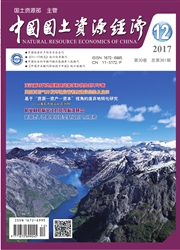

 中文摘要:
中文摘要:
资源型城市(地区)是当前我国城市“二元结构”矛盾集中凸显的地区,也是新型城镇化建设的重点和难点。基于对资源型城市演化过程的梳理,将其城镇化的发展特征归纳为:发展动力的资源主导性、发展轨迹的政策指向性、发展模式的高速低质性、发展基础的系统脆弱性。综合相关问题分析,资源型城市的城镇化发展面临着三大要素制约,即资源依赖型的产业体系使城镇化发展缺乏核心动力,交通闭塞的区位条件使城镇化发展缺乏良好环境,二元管理的体制机制使城镇化发展缺乏支撑功能。在此基础上,结合发展周期和区位条件差异,提出了资源型城市推进新型城镇化建设的战略导向和重点任务。
 英文摘要:
英文摘要:
Resource-based city is not only the areas where Chinese urban dual structural contradiction presents to us, but also the key problems that have been encountered during the course of the new urbanization construction. After sorting out the evolution process of resource-based city, this paper reduces its development features to the following: resources have predominance in driving force of growth; the policy directs the development track; high-speed and low-quality of development patterns; and system frangibility of development foundation. Furthermore, this paper introduces the three major factors that we face in our efforts to promote the urbanization development of resource-based cities: there is no core power for urbanization development because of resource-dependent industrial system; Iocational conditions of traffic congestion have been unable to provide a good environment for urbanization development; dual management institutions and mechanisms have been unable to meet the demands for the promotion of urbanization development. On this basis, this paper puts forward the strategic orientation and key tasks for promoting the new urbanization construction concerning resource-based city in accordance with development cycle and locational differences.
 同期刊论文项目
同期刊论文项目
 同项目期刊论文
同项目期刊论文
 期刊信息
期刊信息
